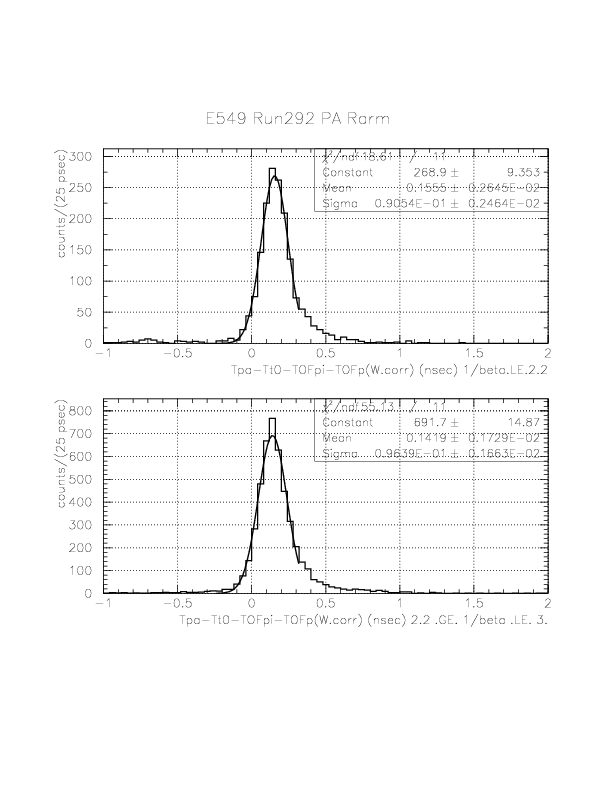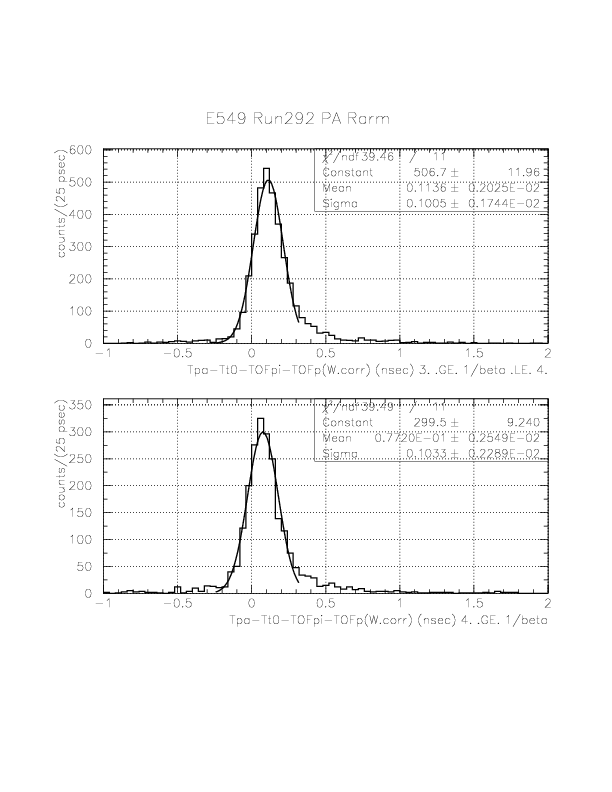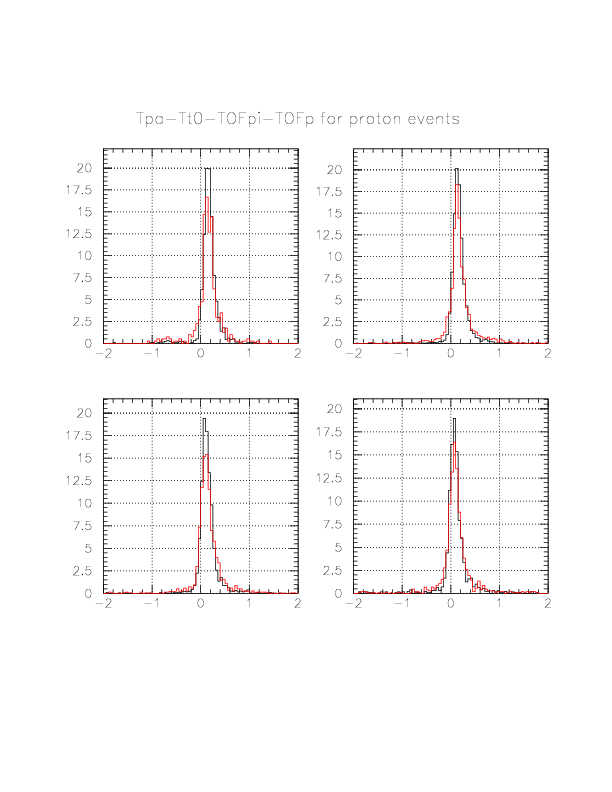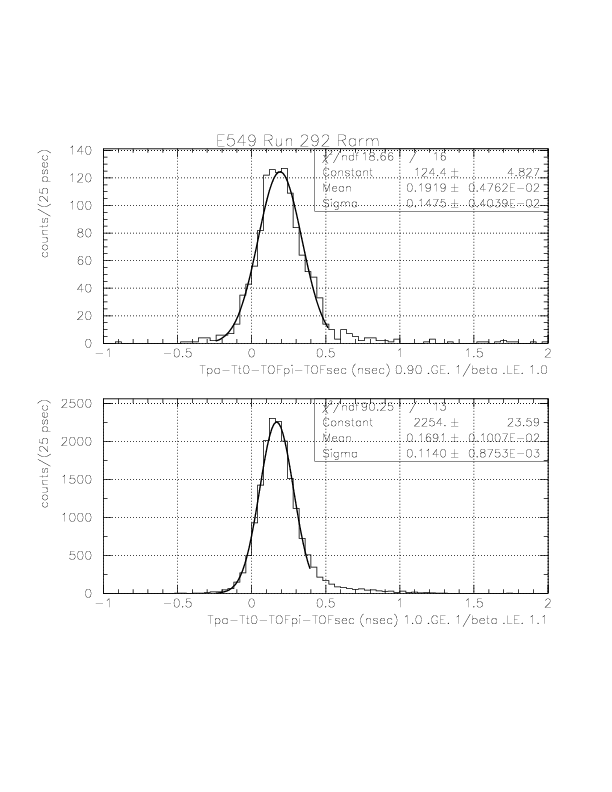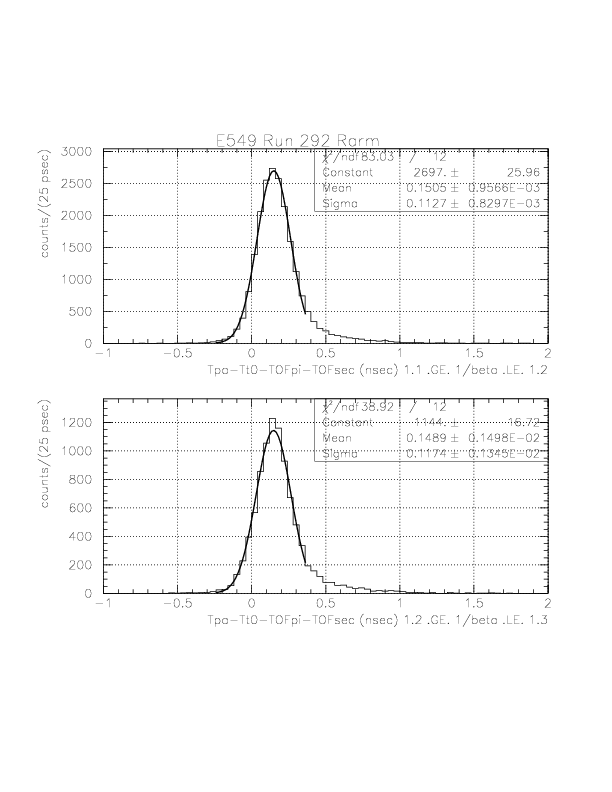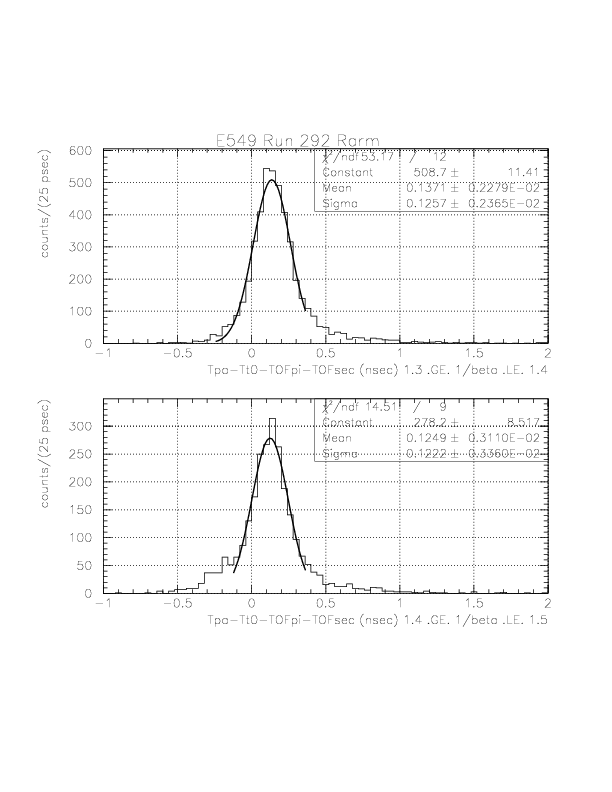1. Run-by-run tune of T0/PA/PB timing,
2. Systematic proton ID criteria on PB/NT system, and
3. vertex->PA TOF calculation code from PAPB TOF
are investigated and developed. Then, now we examine the 4He(pi^-, X) prompt timing analysis, which has been once examined (see, here), but remained as an advanced subject.DeltaT(T0->PA) = Tpa - Tt0 - TOFpi - TOFsec,
for the 4He(pi^-, pi^+/-) / 4He(pi^-, p) reactions. Note that Tpa/Tt0/Tpb run-by-run time walk/relative offsets had been already eliminated here. For the former reaction, TOFsec is just simply calculated with the PAPB-detected velocity and flight distance without any correction, while energy loss correction is applied and TOFsec is re-calculated for the latter.First, 4He(pi^-, p) results are presented. Since Delta E range is large on PA, the large-energy-effect on the PAtiming should be seen here, if something exist.

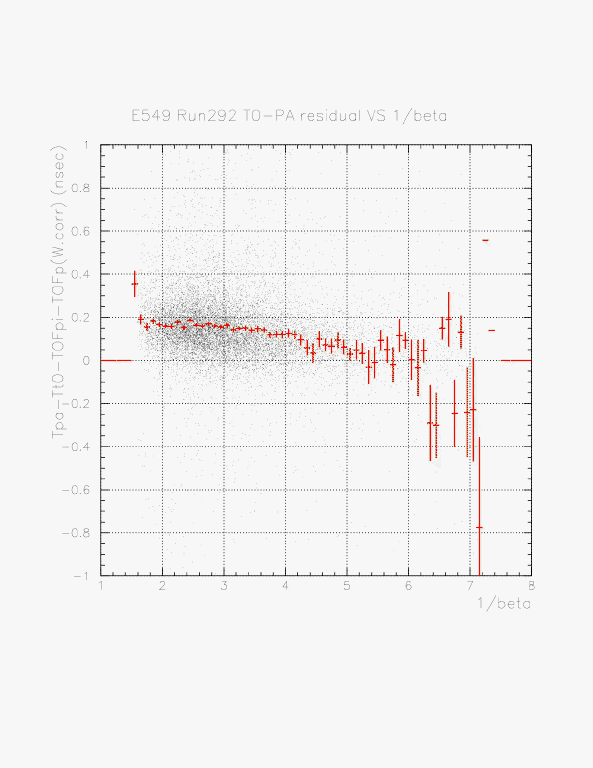
The resulting correlation is moderate, although non-negligible 1/beta dependence still remains. Since 1/beta is strongly dependent on the delta E on PA, it may be attributed to the deviation of the slewing correction function from the realistic one at high-energy-deposit. This problem is treated AFTER T0-PA TOF is studied with (K^-, p) with huge statistics up to 1,000,000 proton events. Even if it really exist also on (K^-, p), the maximum error value caused by this effect is at most 100 psec on the PAPB TOF. The correlation between delta E on PA and delta T(T0->PA) is shown below.

It is interesting to compare the width of deltaT(T0->PA) between (pi^-, pi^+-/mu^+-(e^+-)) and (pi^-, p). For the comparison, relatively fast non-proton-particles are selected to avoid possible uncertainty by the deceleration inside the target system.
